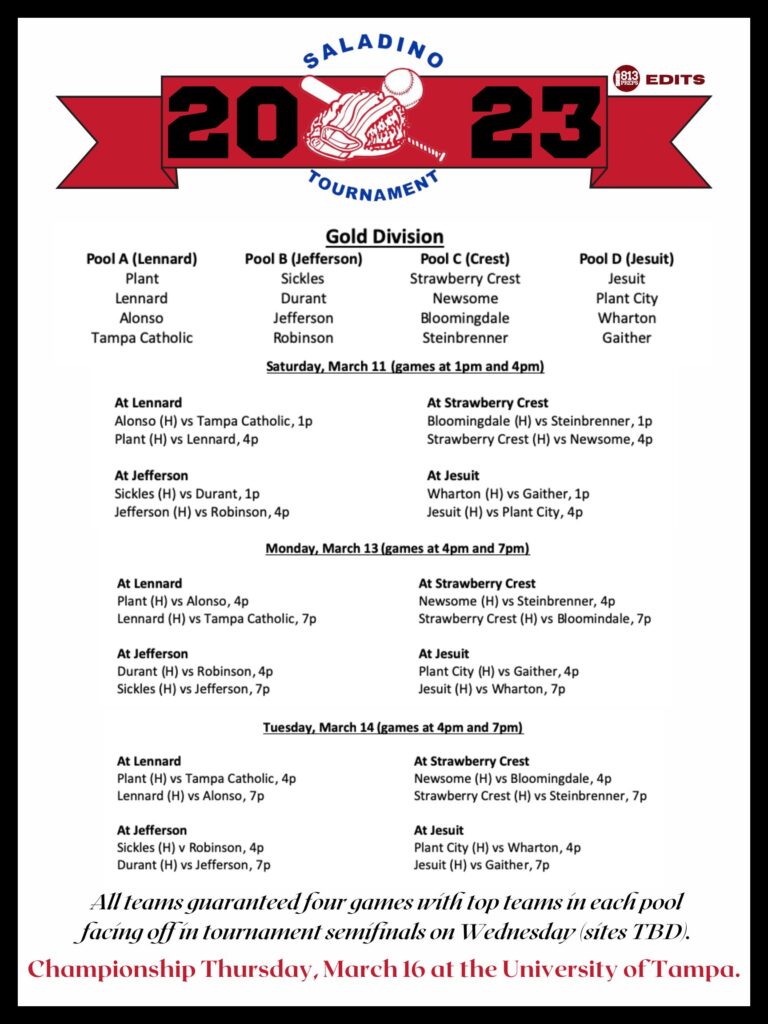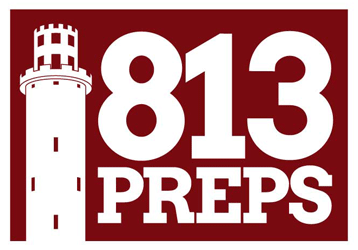Saladino Tournament sets schedule for 42nd edition
Staff Report
Click here for ticketing to the event.
The 42nd edition of the Saladino Baseball Tournament is set for spring break, and will once again be broken down into two divisions – a 16-team Gold Division, and an eight-team Silver Division.
However, the format has undergone a little tinkering, as the Gold Division will return to a pool-play model beginning on Saturday, March 11, with each team guaranteed a minimum of four games, and the two finalists playing a fifth game for the tournament title on Thursday, March 16.
With four pools of teams hosted at Jefferson, Jesuit, Lennard and Strawberry Crest, each team will play its first three games at the same site, rather than the previous two years, where teams had to change sites each day. The tournament organizers said the changes to this season’s tournaments were in hopes to make things easier and more structured for the first three days of the event, while maintaining the competitiveness that was behind the changes to the tournament three years ago. They’re attempting to adapt to the changes in the FHSAA’s playoff rankings and region tournament selection.
“We are making these minor changes with the hopes of making our tournament better than ever,” Tournament Director Tony Saladino III said.
Another change from the previous two tournaments was the selection and ranking for this seasons event undertaken by a Saladino Tournament Scheduling Committee, consisting of Tony Saladino III, last year’s Gold Division champion coach Dennis Braun (Plant), last year’s Silver Division champion coach Victor Martinez (Lennard), tournament semifinalist coach Eric Beattie (Strawberry Crest), and 813Preps editor Jarrett Guthrie.
The 24 teams were selected based upon a number of factors, including last season’s win total, last season’s tournament finish, as well as the final FHSAA/MaxPreps rankings. The addition of coaches providing to the committee input on returning teams’ strengths this season were also part of this tournament’s decisions.
After the pool play rounds, the winners of each group will enter the tournament semifinals, while tie-breaker rules (will be announced prior to the event) will establish the rest of the pool’s final rankings, and each team will get a fourth game against a correspondingly seeded team from a different pool on Wednesday, March 15.
Once the Gold Division teams were ranked, the tournament reached out and finalized its host sites and built around those four host teams to reasonably organize the teams into pools. The top two teams in each pool will now face off on Saturday to open the tournament with some excitement, and possibly allow the event to close with aces on the mound for Thursdays final … which returns downtown to the University of Tampa, home to the eight-time NCAA Division II National Champion Spartans.
Here is the pool groupings and the schedule for the pool play rounds:

The Silver Division will consist of two, four-team pools and the tournament committee did use some scheduling discretion here, while maintaining a competitive balance. However, planning did try to keep teams closer to the two host schools – Leto and Sumner.
Like the Gold Division’s setup, the Silver Division will also feature the two pools ranked after the first three games, with each corresponding team facing its counterpart in the other pool, and the No. 1’s squaring off for the Silver Division title on Wednesday, March 15.
Here is the Silver Division pool-play schedule:













